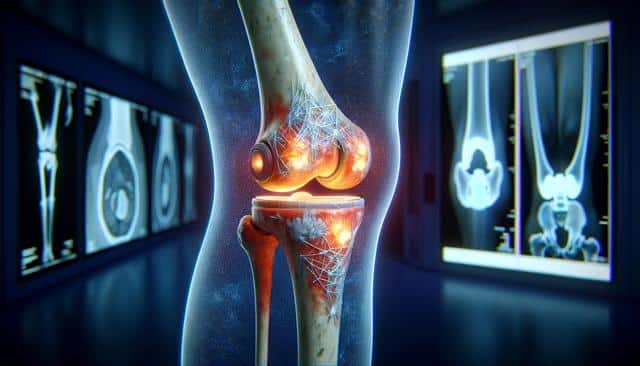
Battling Joint Pain: Symptoms to Watch For and the Most Effective Treatments
Understanding Joint Pain and Its Common Causes
Joint pain is a widespread issue that affects people of all ages. Whether it stems from aging, overuse, injury, or underlying health conditions, the discomfort can significantly impact one’s quality of life. Common causes of joint pain include osteoarthritis, rheumatoid arthritis, bursitis, gout, and strains or sprains. Each condition has its unique characteristics, but they all share a common symptom: persistent or intermittent pain in one or more joints.
People often experience joint pain in the knees, hips, shoulders, and fingers. Some causes are acute and can resolve with rest and care, while others are chronic and require long-term management. Factors such as age, weight, previous injuries, and repetitive movements can increase the risk of developing joint pain. Understanding what may be contributing to your symptoms is the first step toward finding relief.
Common risk factors include:
- Excess body weight, which puts pressure on joints
- History of joint injuries
- Repetitive motions from work or sports
- Autoimmune conditions
By identifying the root cause, individuals can tailor their approach to treatment and prevention more effectively.
Key Symptoms to Watch For
Joint pain is not always easy to diagnose early, especially when symptoms can vary in intensity and frequency. However, recognizing the warning signs can help in seeking timely medical advice. Some of the most common symptoms include:
- Persistent joint discomfort or stiffness, especially in the morning
- Swelling, redness, or warmth around a joint
- Limited range of motion or difficulty moving a joint
- Pain that worsens with activity or after prolonged periods of rest
- Clicking or popping sounds during movement
These symptoms may develop gradually or appear suddenly, depending on the underlying cause. For instance, in inflammatory joint conditions like rheumatoid arthritis, symptoms often appear symmetrically and are accompanied by fatigue or malaise. In contrast, osteoarthritis may cause localized pain that worsens throughout the day.
Prompt attention to these signs can prevent further joint damage and improve long-term outcomes. If symptoms persist for more than a few weeks or interfere with daily activities, it is advisable to consult a healthcare professional for a proper diagnosis.
Diagnosis and When to Seek Help
Diagnosing joint pain involves a combination of medical history, physical examinations, and imaging studies. Physicians may ask about the duration, location, and severity of the pain. Blood tests can help identify autoimmune conditions, while X-rays, MRIs, or ultrasounds can reveal structural issues within the joints.
It’s essential to seek medical attention if you notice:
- Sudden, severe joint pain with no clear cause
- Visible joint deformity
- Unexplained weight loss or fever accompanying joint symptoms
- Joint pain following an injury
Early diagnosis is crucial, especially for conditions like rheumatoid arthritis or lupus, which can progress quickly without proper intervention. Tailoring the treatment plan according to the root cause ensures that the approach is both effective and sustainable. In many cases, a multidisciplinary approach involving rheumatologists, physiotherapists, and orthopedic specialists yields the most balanced care plan.
By understanding what’s causing the discomfort, individuals can make informed decisions about their treatment options and lifestyle adjustments.
Treatment Options: From Conventional to Alternative Approaches
There is a wide range of treatment options available for managing joint pain, depending on its severity and underlying cause. Conventional treatments often include:
- Non-steroidal anti-inflammatory drugs (NSAIDs) for pain relief
- Physical therapy to improve flexibility and strength
- Corticosteroid injections for inflammation control
- Surgical interventions in advanced cases, such as joint replacement
In addition to these, many individuals explore alternative and complementary therapies to enhance their comfort and mobility. These can include:
- Acupuncture and massage therapy
- Dietary changes, such as adopting anti-inflammatory foods
- Supplements like glucosamine and chondroitin, which are often used to support joint health
- Mind-body techniques like yoga and tai chi
Some lifestyle changes can also make a significant difference. Maintaining a healthy weight, staying active, and avoiding joint overuse are all proactive steps that can help manage pain. It’s important to consult with a healthcare provider before starting any new treatment to ensure it’s suitable for your specific condition.
A combination of strategies often yields the most sustainable relief, especially when tailored to personal health needs and preferences.
Preventive Measures and Long-Term Management
Preventing joint pain, or at least minimizing its impact, is possible with consistent efforts. Long-term management often involves a combination of lifestyle modifications, regular monitoring, and medical support. Here are some preventive actions that can help protect joint health:
- Engaging in low-impact exercises, such as swimming or cycling
- Strength training to support the muscles around joints
- Using proper techniques during physical activities and lifting
- Wearing supportive footwear and using ergonomic tools at work
Nutrition also plays a key role. Diets rich in omega-3 fatty acids, antioxidants, and vitamins D and C contribute to joint and bone health. Staying hydrated and avoiding excessive consumption of processed foods can further reduce inflammation that may exacerbate joint discomfort.
For those already experiencing chronic joint pain, long-term strategies may include routine physical therapy, periodic check-ups, and personalized pain management plans. Mental health support, including stress-reducing practices, can also benefit individuals living with chronic pain.
By focusing on prevention and consistent care, individuals can improve their mobility, reduce flare-ups, and maintain a more active lifestyle over time.
Conclusion: Taking Charge of Joint Health
Joint pain can be a challenging condition, but understanding its causes, recognizing early symptoms, and exploring a range of treatment options can empower individuals to manage it effectively. Whether you’re dealing with occasional discomfort or chronic issues, taking proactive steps makes a difference. From staying active and maintaining a healthy diet to seeking professional guidance, managing joint pain requires a comprehensive approach tailored to individual needs. Prioritizing joint health today can lead to greater comfort, flexibility, and independence in the future.


